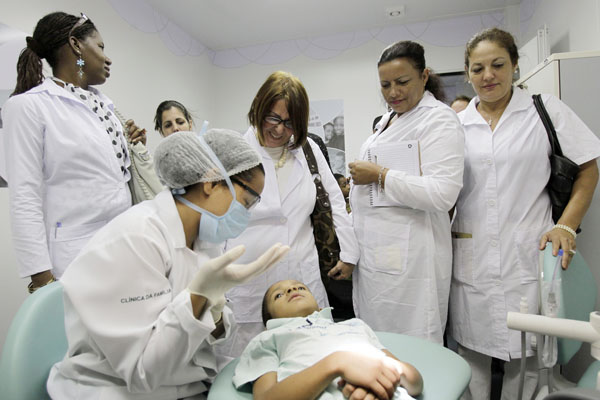
Many admission councils at U.S. medical schools simply look at numbers when they review the thousands of applications that come through each year.
The competition to make the best grades, have the fullest schedule possible and have the most clinical experience is palpable among pre-med students who hope to be accepted into top universities’ medical programs. However, at this year’s annual medical kick-off lecture hosted by Alpha Epsilon Delta (AED— a play on words for Artificial Erythema Defibrillator), the pre-health fraternity on campus, SMU students learned that a 4.0 GPA and a 45 MCAT score do not necessarily equate to a ticket to medical school.
“There are two ways to be number one. Everyone fails around you and you’re the last one standing, or you’re all there together. If you all get there the same way, then you’re all there together, and that’s what we impress on our students. You may have a 4.0, but that’s not the reason why you’re accepted,” said Dr. David Jones, a professor in the Department of Anesthesiology at the School of Medicine UT Health Science Center at San Antonio, who sits on various admissions councils and committees.
UTHSCSA definitely wants bright students who can survive the mental as well as physical demands of medical school, but once the first batch of applicants is weeded out, the determining factor boils down to more than just digits.
Jones stressed to a group of about 80 wide-eyed SMU pre-med students to “not do anything just to get into medical school.” He strongly emphasized that what UT looks for above all in an applicant is an individual who demonstrates the significance of a medical experience that he had: “We want you to describe the value of the experiences that led to this decision to pursue a career in medicine. How do you know this is what you want to do for the rest of your life?”
The application process is tough, Jones affirmed, but not without reason: medical school is tougher.
The application process most medical schools follow is fourfold. In Texas, medical schools are required by law to evaluate the socio-economic standing of each student to see how his educational background aligns with academic achievement.
After this arduous process, they evaluate GPA and test scores to meet the basic standard of expectation: can this student academically make it through medical school? Let’s say there are 4,000 applicants. At this point, they have already been narrowed down to 1,000.
Next, leadership activities and personal activities are taken into account to determine whether the student can take on responsibility, and to find out the depth of his desire.
“You need clinical experience,” Jones said. “Our whole admissions process is predicated on the fact that you won’t quit. We want you to know what you’re getting into.”
Finally, the remaining applicants go through two rounds of interviews, at which point they are examined one last time and, hopefully, admitted.
AED provided cookies and sodas to the audience, along with copies of the AED national magazine The Scalpel in which SMU was featured for its students’ involvement on the medical front.
Christine Buchanan, the faculty adviser for AED and biological sciences professor at SMU explained that this lecture is a tradition of sorts, with a similar lecture put on at the start of each academic year. “It’s really for beginning students to learn more about the field, but even seniors will come to gain valuable information,” Buchanan said.
However, the lecture is not always medical school oriented. AED Treasurer Julia Anthony is a senior accounting major at SMU who is interested in working in health care, and helped to organize the event.
In the past, representatives from health care facilities, nurse practitioners and dental school representatives have come to SMU to speak to students about the medical world in a more general sense, according to AED President Zac Friske.
Sarah Jaffar, an AED member, has seen the past three speakers, making “Unlocking the Door to Med School” her fourth and final kickoff lecture. “Each year I come I find different things that are helpful and interesting,” Jaffar said.
AED hosts various lectures and events throughout the year that are open to the public. Look out for the next upcoming event, “Making a Cure for Cancer as Accessible as Coca-Cola: New Adventures in Global Health” from 5 to 6 p.m. in the Dedman Life Sciences Building room 131 on Sept. 25.












